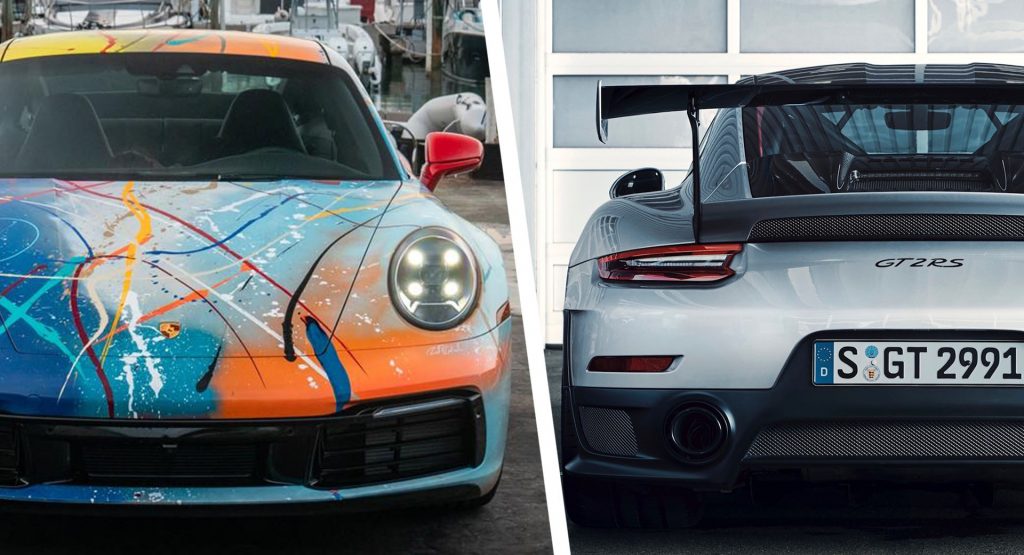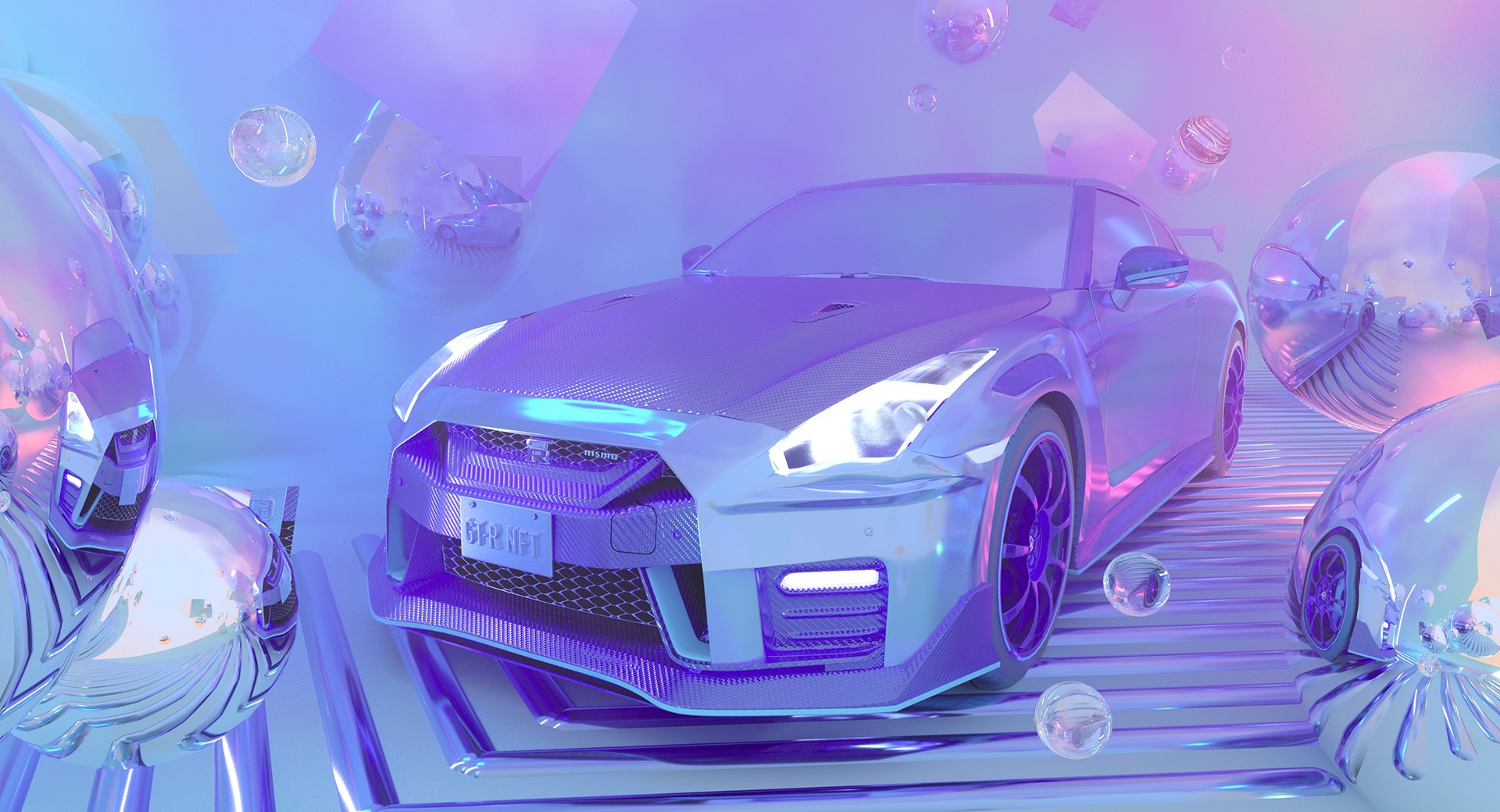Art collectors and investors are going nuts for NFTs right now, and marketing-savvy automakers haven’t been slow to latch onto the craze. Alpine, Nissan, Lamborghini, Mercedes and Porsche have all tried to prove that they’re down with the (rich) kids by creating their own NFTs, despite the movement leaving many car fans entirely non-plussed.
But when you think about it, creating and selling virtual exotic and luxury cars is an entirely logical next step for car makers, because most of the collectors who buy the real ones are so paranoid about ruining their investments by actually using them that they don’t drive them anyway.
First, a recap: NFTs, or non-fungible tokens, are a kind of one-off digital asset created with the same kind of blockchain technology used by cryptocurrencies. NFTs have been around since 2014, but only really hit the mainstream news last year when it became apparent that investors were jumping in hard. Coindesk says that $25 billion has been spent on NFTs since 2017.
You’ve probably heard about Twitter founder Jack Dorsey selling his first ever tweet as an NFT for $2.9 million, someone spending $5.4 m on internet pioneer Tim Berners-Lee’s original email, and a load of the stars of internet memes cashing in on their fame. It might seem strange that someone would pay a fortune for the original Charlie Bit My Finger clip when the rest of the world can still watch it for free on the internet. But the fact that we can all do a Google image search of the Mona Lisa doesn’t diminish the value of the original.
Related: Nissan GT-R NFT Brings $2.3 Million, Real GT-R Nismo Special Edition Also Included
Similarly, Bentley’s Blower recreation cars, stunning and perfect as they are, will never be worth as much as the original, even if they look and drive exactly the same. Collectors and investors buying NFT art like to be able to brag that they have the original, and feel their investments are secure because the NFTs are unique, or at least limited, and the blockchain technology proves that their version is the real deal. We doubt that whoever bought the Charlie Bit My Finger NFT is constantly watching the original movie file. Knowing that he could, is enough.
Which brings me back to the idea of virtual exotic cars as NFTs. Though there are some seriously wealthy car collectors who buy hugely expensive exotic cars and actually drive them, many are bought simply as investments. Think about how many times you’ve read about a 5, 10 or 15-year old Bugatti, Ferrari, Lamborghini or Porsche that’s appeared for sale with little more than delivery mileage. Adding miles to an exotic car decreases its value, and heaven forbid you might end up bending, or more likely, splintering, one of those nice carbon fenders.
It’s just safer to lock your LaFerrari in the garage and treat it, not as a machine, but a static piece of art and an investment. And once you’ve accepted that idea, it’s not a giant leap to see the concept of a virtual supercar NFT as an entirely logical next step.
Logical for the people who buy them, that is, and not for the rest of us. The reality is that people spending a fortune on a one-off supercar NFT almost certainly also have, or could afford to have, a physical supercar they can drive, whereas those of us of more modest means just look at the NFT asset and wonder why you would buy a car you can’t use as its maker intended.
Related: Lamborghini Will Auction Last Ever Aventador Produced Along With 1:1 NFT
Lamborghini’s latest virtual drop does at least come with an actual car to go with the virtual one. A joint project between Lamborghini, contemporary artist Krista Kim, and musician Steve Aoki, it consists of a digital version of the runout Aventador LP780-4 Ultimae on a Martian landscape that’s paired with the very last physical Aventador built before Lamborghini switches to a new hybridised V12 supercar.
Porsche employed a similar dual approach to NFTs last year when it sold a physical 911 hand-painted by Rich B. Caliente and Rick Ross, together with a digital artwork of the car, but many other car-related NFTs have been fairly intangible. In 2021 Porsche auctioned a sketch of a 911 and Taycan Cross Turismo as an NFT, Alpine released five GTA Concept cars that could be used in the REVV Motorsport game, and Nissan sold an R35 GT-R NFT artwork for $2.85 million ($1.45m). Volkswagen North America, seemingly sensing that a huge part of the car enthusiast community doesn’t get the whole cars-as-digital-art movement, or maybe just trying to leverage some publicity without doing any work, built up a buzz around the impending release of the Golf R in the U.S. by referring to it as a the Mk8 Golf NFT, where NFT stood for Notably Fast Transporter.
It’s also interesting to note that while automakers are happily jumping on the NFT craze, privately, people working for car companies have confessed to us that they think it’s all a crock. But then isn’t that what most people said about cryptocurrencies a decade ago? Or what art lovers who owned old masters probably said when they first clapped eyes on the 20th century modern art that’s now hugely respected in its own right (and currently creating far more interest from investors and collectors than the old stuff)?
Though some “car guys” might have a tough time understanding why “art guys” would shell out big money for a non-driving representation of a car, we shouldn’t necessarily trash their interest as being worth less than ours. Just like some guys get a bigger kick out of wrenching on a car than driving one, and others love to race but wouldn’t know one end of a ratchet from the other, the car world is a diverse place, and all the better for it.
But one thing’s for sure: Ferrari sure missed a trick back in the 1960s by not tapping up Picasso to knock out a canvas or two on the 250 GTO.
What do you think of the way car companies are falling over themselves to get in on the NFT trend, and what do you think of NFTs in general? Would you buy one? Leave a comment and let us know.






